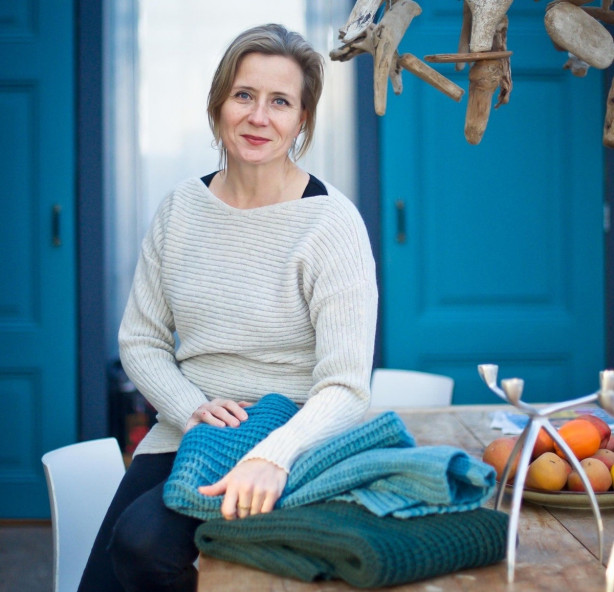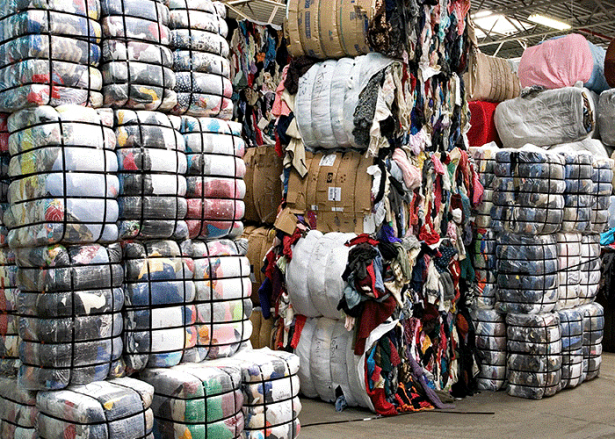Throughout the week of the Circular Economy, we are shining a spotlight on inspiring sustainable initiatives in the Netherlands. Joining forces with startups, social entrepreneurs, creative professionals, leading companies, and forward thinking governments, to showcase what a circular economy can look like. Meet the pioneers, learn from them and get inspired! Next up: Ellen Mensink, founder of Loop.a life – possibly the world’s most circular sweater.
Throughout the week of the Circular Economy, we are shining a spotlight on inspiring sustainable initiatives in the Netherlands. Joining forces with startups, social entrepreneurs, creative professionals, leading companies, and forward thinking governments, to showcase what a circular economy can look like. Meet the pioneers, learn from them and get inspired! Next up: Ellen Mensink, founder of Loop.a life – possibly the world’s most circular sweater.
Ellen, what is the story of Loop.a life?
After my economics degree I went to the Rietveld Art Academy. There I loved to work with textiles. Later, in my work in all kinds of programs and innovation labs, I constantly missed a tangible end product. At some point I initiated the project ‘From Sheep to Shop’. My aim was to get wool – a beautiful and sustainable product, or so I believed – through the entire production process in a transparent way. That was somewhat disappointing, it turned out hard to trace. Around the same time, the Rana Plaza factory in Bangladesh collapsed. I found it unbelievable that we buy and wear clothing every day at far too low prices, while people on the other side of the world pay for it with their lives.
Waste was also a topic I’d always been intrigued in. I then started a research lab for sustainable fashion and waste in the textile chain. Recycling turned out to be the most logical way to go. I chose wool because it’s a strong and easily recyclable fiber, and there was a lot of potential to make its production chain more sustainable. A crowdfunding campaign showed that people really did want to invest their money in this kind of product, and actually liked the end result. Then it was just a matter of actually doing it: in 2016, I started Loop.a life and in October we launched our first collection during Dutch Design Week.

You’re known for your “truly circular” sweaters, please tell us more about that.
Our sweaters are 100% circular as our production process is closed-loop and completely in our own hands. We try to include sustainability in every aspect. We use as much postconsumer material as possible (up to 70%, mixed with industrial waste material and sometimes recycled pet for the color and strength of the yarn) and need no water or chemicals in the entire process. We only use fibers from locally worn jeans and sweaters, which have also been sorted here in Amsterdam. Our yarns and clothes are made strictly within European borders. This means far less transport than the usual route to South Asia, where clothing waste is usually recycled – only to be sent back to Europe to be turned into yarns, before again being sent to India or Bangladesh where the actual clothes are made! I think I can safely say that we have the most sustainable sweater in The Netherlands, possibly even in the world. At least that’s our ambition.
Can you measure your impact on the transition to a circular economy?
Yes, because we only work with our own production partners. All the data from the lifecycle analyses, such as the amount of water, energy and CO2 that goes into our sweaters, are on our website. Of course, what we actually want to know is how much it takes to make exactly 1 sweater; lifecycle analyses are still based on generic data in the industry. That’s what we will try to figure out this year, mainly by pushing our partners to dive deeper into their energy and water usage and truly question what is really necessary.
What has been the best moment in this process of establishing Loop.a life?
I’d say that was when we first started. With a group of students, we’d spent hours sorting heaps of old textile into different colors. All the arrangements with the production partner had been made, and we’d ambitiously ordered no less than 15 colors to start with. Only when the boxes finally arrived did it dawn on me: this is really happening, there’s no going back… but it couldn’t have been better: every single color turned out beautiful, it felt like walking through a candy shop!
Another exciting moment was more recently, when we decided to expand to cotton (from waste streams in the Netherlands). We’d chosen to work with a small spinning company in Italy. When we went there to finalize the collaboration, he’d already started spinning yarns – out of pure enthusiasm! It was amazing, this guy completely understood our mission and was very eager to help.

What are challenges you faced setting up Loop.a life?
The biggest challenge is being an ‘impact company’ and a start-up at the same time. Working with waste makes it even more complicated, because you’re really pioneering and have to examine every new waste stream or material. I also find collecting funding one of the hardest things, it’s constantly on my mind. Governmental subsidies for circular initiatives are often limited because it’s such an innovative field, which is a shame because these kinds of initiatives often have a lot of potential. They just don’t fit into the current system yet. We originally started out with crowdfunding, but currently depend mainly upon investors or organisations such as Stichting Doen. This can be just as hard. During a pitch I held at an accelerator project at Impact Hub I noticed that investors often have a ‘hockey stick’ mentality: as much revenue as possible, as quickly as possible. But the thing about being an impact company, especially one that focuses on a societal transition, is that you simply can’t let your revenue rise that quickly because you’re constantly developing and innovating behind the scenes. That makes it a lot harder to collect conventional investment funding.
What would be your advice to other starters that focus on the circular transition? How can you truly scale up?
Of course it always depends on what the specific business case and the materials you use. It helps to know clearly what you want to achieve and to have a clear vision. Most of all, though, I would say: collect as much money as possible from the start. It simply does not happen on its own. I always say: if this doesn’t work out I can always become a venture capitalist because I know so much about organising funds now… almost more than about textile!
What needs to change in the textile industry as a whole for it to become more circular?
The government could play a larger role. For example, it would make a tremendous difference if they lowered the value added tax (VAT) on products with a high percentage of postconsumer materials. That would make it more interesting for manufacturers to recycle. The government could also act as ‘launching customer’ for certain projects, that way assuring a certain level of demand and allowing for start-ups to experiment with new products. Generally, we’ve noticed that a lot of companies are interested in transitioning to a circular economy, but they simply don’t know where to start. They’re so used to just making sweaters, and it’s not in their production process to think about the waste that they also produce. It requires a whole different mentality in the textile industry.
What are you currently working on?
We’re trying to expand, and are currently looking at offering business gifts as well. This makes it easier to include our products in a Christmas bonus, for instance. In collaboration with Wieland Textiles, we’re also working on a new production line (the ‘Smart Fibersort’) to automate the process of sorting, cleaning and fiberizing postconsumer material. That way, we can hopefully turn local waste streams with postconsumer material into new high-quality material, focusing on the upcycling of postconsumer material in textile end products. We always say: beautiful materials deserve eternal life.

Any last words for ‘Amsterdammers’?
I would say: bring as much textile as you can to the textile containers so that it can be reused. Apart from that, support and buy from companies that truly work in a sustainable way and that look critically at the entire production chain. That way these impact companies can keep their little innovation engine running.
--------------------------------------------------------------------------------------------------------------
This interview series is a collaborative initiative of Metabolic, AMS Institute, City of Amsterdam, Amsterdam Economic Board and Amsterdam Smart City. Working together within the Amsterdam Smart City platform, these organizations are committed to accelerate the transition to a circular economy.





